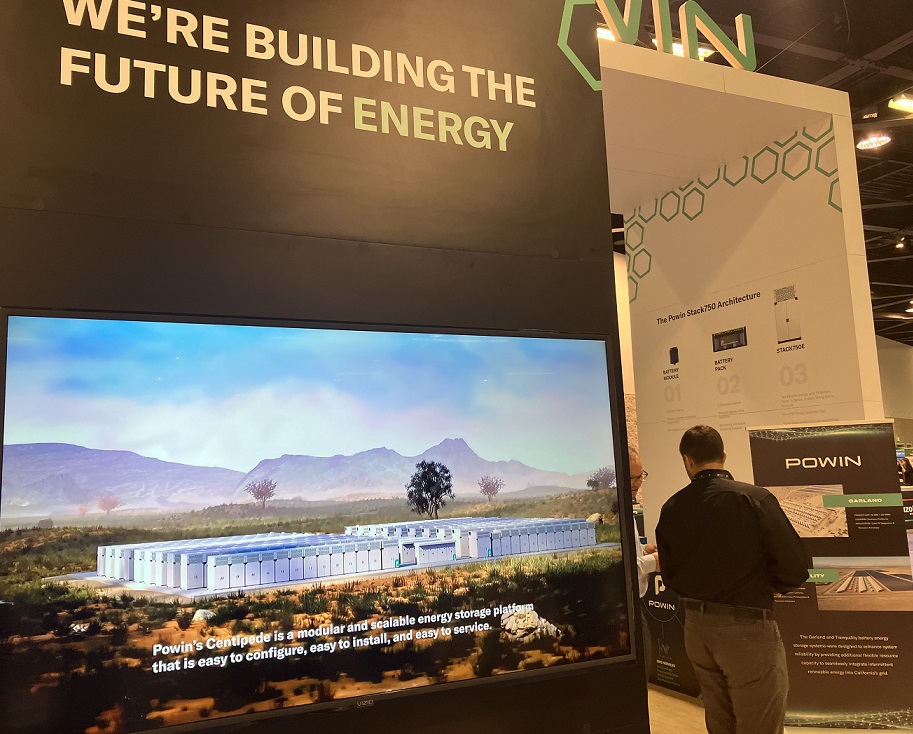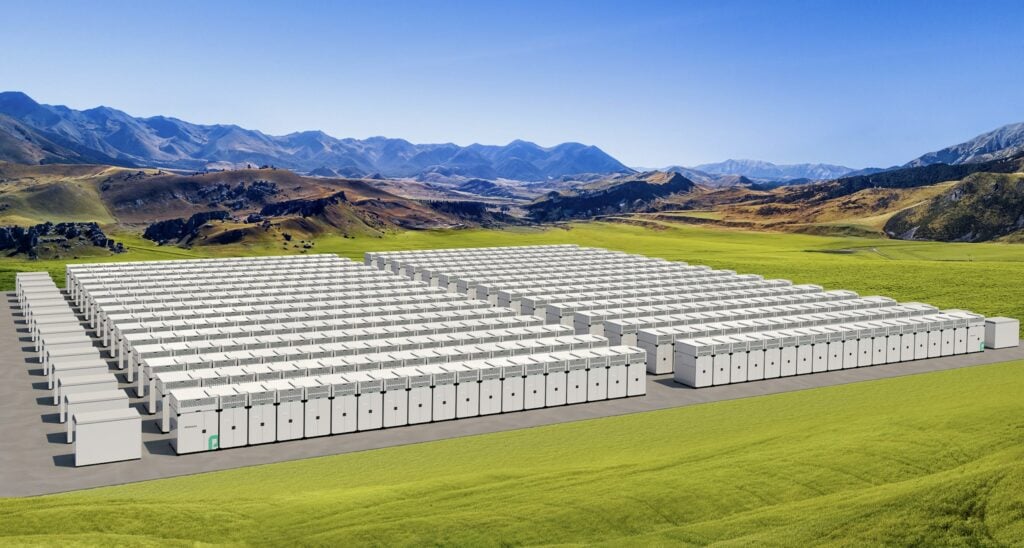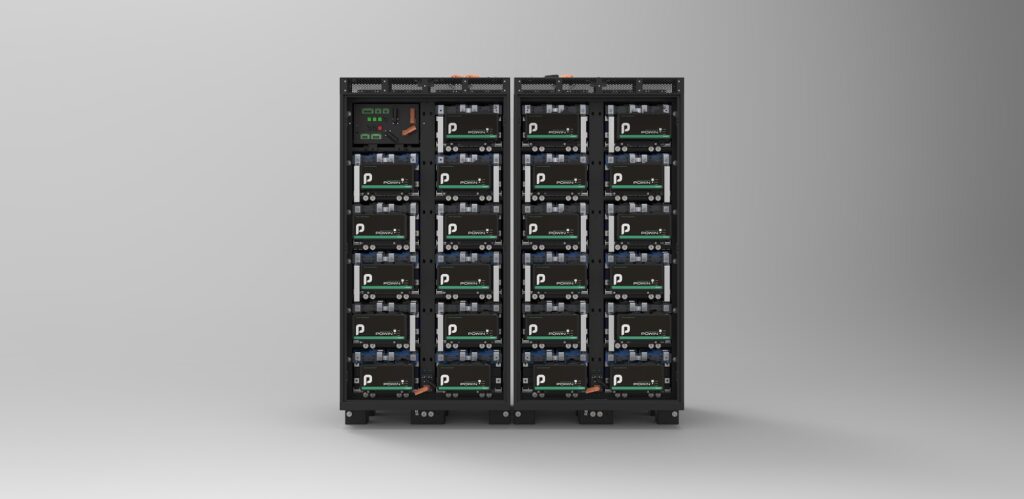
We speak to Powin Energy executive VP Danny Lu, in the latest of Energy-Storage.news’ interview series with industry leaders at last month’s RE+ 2022 clean energy trade show.
If you’ve seen our coverage of the event so far, including our conversations with Fluence and Wärtsilä Energy executives and about a dozen news stories, you’ll know that big picture conversations were dominated by two main topics.
Enjoy 12 months of exclusive analysis
- Regular insight and analysis of the industry’s biggest developments
- In-depth interviews with the industry’s leading figures
- Annual digital subscription to the PV Tech Power journal
- Discounts on Solar Media’s portfolio of events, in-person and virtual
The first is the excitement around the Inflation Reduction Act (IRA) legislation and the transformative positive impact it is expected to have – or in fact is already having – on the market.
The other topic is less positive. The impact on supply chains of lithium battery shortages and logistical delays caused by COVID19 and latterly geopolitics has been challenging to navigate. Even there however, many sources told us the industry is weathering the storm and finding success, perhaps because demand for energy storage is only increasing.
That’s despite the impact on battery and other equipment pricing, and delays to projects from investment decisions to construction and commissioning.
With Powin ranked among the leading energy storage system integrators by IHS Markit (now part of S&P Platts Global) and others, we took this opportunity to ask Danny Lu for insights into those topics, but also a broad range of others.
The interview took place just after Powin announced its acquisition of Spanish power conversion system (PCS) and energy management system (EMS) provider EKS Energy, which you can read about here. You can also read some of Danny’s comments – along with those of LS Energy Solution strategy and analytics director Ravi Manghani – on the importance of PCS in energy storage project success in our recent news story here.
Also, just to note quickly that Danny alludes to the attractiveness of the Australian battery storage market. Yesterday, we reported on the company’s first project in that country, the Waratah Super Battery in New South Wales.
Can you briefly explain to us the deal to acquire EKS Energy and what that means for Powin?
Powin purchased all assets, people, IP, technology of a company from Seville, Spain, called EKS Energy. EKS was originally one of the leaders of doing conversion and statcoms for wind back in the early 2000s, and then they moved into PV as well.
Just in wind and PV, they’ve installed over 4GW of PV inverters and statcoms, in the last 10 years. [Since then] they’ve really made a name for themselves in terms of energy storage integration, especially when it comes to very difficult grid conditions.
They’ve interconnected the most projects in PREPA in Puerto Rico. They have interconnected hundreds of megawatts of projects, in HECO in Hawaii, they’ve also interconnected projects in Chile. These markets are much more difficult because of the weaknesses of the grid.
The team at EKS has proven that they can do all the interconnection modelling, they can create customised, tailor-made solutions for each of these markets that integrate solar, wind, that integrate traditional generation sources all together, to form a hybrid generation plant or microgrid plants.
We felt like there’s really good synergies between our companies because EKS is somewhat of a niche player in the PCS and PV space. They’ve done very difficult projects, but also for a small company out of Seville, they’ve installed projects in all corners of the world, which means that they have very good product reliability. Where we come in to support EKS is really to scale their supply chain, scale their manufacturing, to be able to meet enhanced demands, which then will in turn lower their cost to be more competitive.
So, in terms of EKS’ interconnection work, that means the ability to study and model how the equipment can be configured and ultimately be used to send energy to, or in the case of batteries from, the grid?
Exactly. Every grid operator, or every government, has a different connection process, depending on the grid condition, and how reliable or stable the grid is.
Especially in small island grids, they require very deep functionality in terms of how the PS CAD models work, and how the hardware actually responds to how the models work. Everything needs to be in synchronisation for you to get the approval to interconnect, and this team over and over again, in different regions of the world, on very difficult grids, have proven that they can perform and connect their equipment.
Of course, interconnection to the grid is a big issue in the US as well. That’s perhaps more focused on grid congestion or of projects queuing up to go onto the grid and a bit less on the technical difficulties as such. How will this acquisition help Powin in that regard?
Powin has done a really good job on its own to interconnect in the United States: in CAISO, ERCOT, New England ISO, those are all markets that we’ve connected in, because the grid is not as weak as it is in other regions.
I think that EKS will bring a lot of value to us in our international expansion plans and we’re trying to figure out how we can kind of merge our products together to deliver more vertically integrated solutions that combine the highest level of controls up to the SCADA all the way down to the DC battery cells.
And the acquisition includes EKS’ EMS too, how crucial is that?
It includes the acquisition of the EMS, but it’s less of an EMS and more of a power plant controller. There are some overlapping features of our EMS and theirs, but theirs has more capability to integrate alternative sources of generation, solar, wind, diesel generators, to aggregate and control them together.
Our EMS is more focused on the battery itself, and maybe adding the DC-coupled solar-plus-storage functionality, but theirs adds a lot of alternative functionality when it comes to microgrid capability, synchronous inertia etc.
Synchronous inertia is an increasingly important application in the Australian market, where Powin is moving into next, isn’t it?
Exactly.

The Inflation Reduction Act is obviously a major talking point. The details are still to be confirmed and implemented, but the legislation includes a lot of emphasis on supporting domestic content as well as labour. Are there plans to bring EKS’ manufacturing into the US, and more generally, for Powin’s other equipment manufacturing and procurement?
Part of our main strategy is that we want to control as much of the technology as possible. We want to be able to control where the components were made, where the final assemblies are made.
Having that control over this IP on the DC battery and the PCS allows us to dictate where the final assembly occurs, allows us to control where the metal is procured, allows us to control where the PCB and control boards are assembled.
With our vertical integration strategy, there is a lot of potential to combine the manufacturing and assembly of our collective systems anywhere in the world, but we are focused on identifying vendors in the United States that can build the PCS, as well as the battery module, as well as the full stack, as well as the enclosures and the metal that the stack goes in.
We have already identified vendors and are deep in the process of quoting and signing framework agreements with US-based manufacturers.
People have done all kinds of readings and interpretations of the IRA so far and perhaps for Powin it’s a bit early to say what sort of levels of domestically produced content the company could reach and therefore what sort of investment tax credits (ITC) could be availed?
It’s a bit early to say, because the details of how the incentives work and how the rebates work, is yet to be determined.
People know generally what the amounts are going to be, but they don’t know exactly the intricacies of what exact parts are exempt, what parts can come from China, what parts have to be procured in the United States.
So, we’re still in a wait and see mode, but we’re doing the parallel work to try to ensure that by the time the details get announced, we have all the relationships in place where we can just sign a contract and move forward.
We heard from a few people that it’d be a mistake to wait too long on those details, and not make at least initial steps forward of the kind it appears Powin is taking.
Yes. It’s a rush to get a head start on being US-made to capitalise on the IRA. If we don’t do it, then we’ll be behind others.
Just as when Trump announced Section 301 tariffs, we were the first company to move out of China into Taiwan. So, we want to just keep replicating that model and we want to keep proving that we can be one of the most flexible and nimble companies in the space.
The other most common topic of conversation here at RE+ 2022 is supply chain. We spoke about six months ago about that situation as it was then, but do you have any views on how it’s changed since and what you see in the market today?
Over the last six months, it’s been continual volatility, on average increases of more than 30%, up to 50% in some cases, on the cell level.
Recently, in the last few months, we’ve seen a leveling off of the cell pricing, where there’s still opportunity for the vendors to change the price via indexing, but we’ve seen a leveling off of the cell pricing and we’re predicting that things may increase a little further, but not as dramatically as in the last six months.
But in general, things are looking to be fairly level, potentially raising at a five or 10% versus 30 to 50% and probably stay that way for the next two years.
EVE and CATL are two of our publicly announced contracted vendors, we have two other contracted vendors that we haven’t announced yet. But we do have firm contracts for Master Supply, that give us fixed capacity from each of these vendors. However, there is some ability to adjust the pricing within a band. The vendors are all offering similar terms, but in general, the baseline pricing is variable.
Powin leverages these cell suppliers against each other to ensure that our customer base can get the highest value offering available in the market.

What sort of direction do you see the US market going in?
It’s really exciting what’s happening in the US, especially with all the excitement around the Inflation Reduction Act, and all the policies and incentives available.
Everyone can’t stop talking about it, but I think it’s exciting how the energy transition in the US is really happening at such a fast pace [already].
So much more adoption of solar and wind, creating the market for batteries and creating a necessity for batteries to really resolve the evening peak situations caused by the [increasing] solar penetration.
I really do think that America is always going to be leading in terms of the energy transition and the adoption of renewables, as well as the adoption of batteries.
It’s exciting to see other countries taking examples from the US market, and really kind of replicating the energy markets, replicating the kind of initiatives for renewables adoption and also, taking it to another level by really decommissioning a lot of traditional sources, like coal, nuclear, peaker plants.
Those are all key pictures that that really create a strong future market for batteries, but also a sustainable future.
Have the impacts of the IRA already started to become visible to you on the customer side?
Prior, we’ve had customers come to us with maybe 10MW or 50MW, four-hour projects. Now, all of a sudden, these are increasing to multiple-hundred-megawatt size projects.
We haven’t seen a huge influx of quantity of projects, but the projects that we’ve seen come in, have, like, doubled, tripled, or even 10x in size. I think developers are willing to take more risk now, specifically after the announcement.
Project sizes are now heading into gigawatt scale, or gigawatt-hours scale and I think it’s, it’s all due to the IRA and the benefits that the government is providing.
Finally, are there any forward-looking technology trends that you think our readers should be aware of?
Overall, what Powin has focused on is vertical integration of the hardware, very tightly integrated software solutions that combine power plant control, different sources of generation and microgrid capability. That’s really where our innovation internally comes from.
But [more industry-wide], we are seeing a lot of influx of new battery cell technologies that may start to be utilised in the future, reaching maturity in the next few years. We always have an eye on alternative battery chemistries, solid state, sodium-ion, but we’re still waiting to see.
We’re just in an exploratory phase, we want to keep up on the technology and if one kind of rises to the top, we want to be the first to sign a big contract with them.

